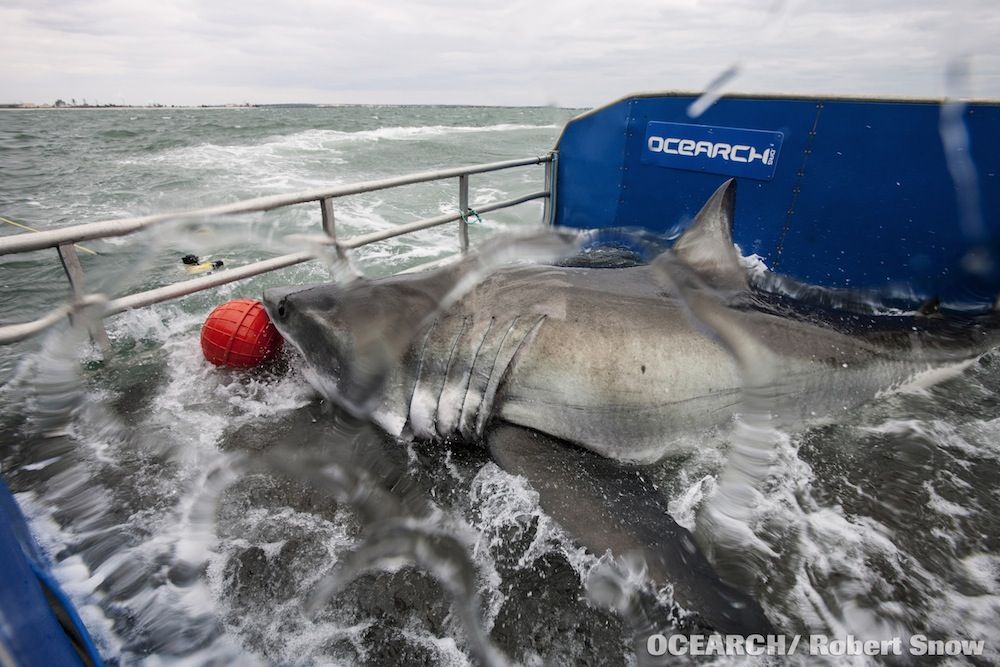
Great White Shark Tagging Expedition Sets Sail Today

How many great white sharks live off the U.S. East Coast, and how do they make a living? Researchers and fishermen set sail today (July 30) from Cape Cod, Mass., to find out, in one of the most ambitious expeditions to ever tag great white sharks.
The mission is to tag as many as 20 sharks. That would make it the largest shark-tagging mission in U.S. history, according to the nonprofit shark research group OCEARCH, which is leading the mission along with the Woods Hole Oceanographic Institution (WHOI).
The effort is aimed at better understanding the animals and to inform the public about the importance of sharks, which serve as top predators and are vital for the proper function of ocean food webs, said WHOI researcher Simon Thorrold. As many as 100 million sharks are killed per year due to both legal and illegal fishing, a recent study found.
"Given how much interest there is in great white sharks, we are still scientifically trying to find out the very basics," Thorrold said.
Aboard a vessel known as the M/V OCEARCH, researchers will cast lines for great white sharks, using barbless hooks designed to minimize harm to the animals, Thorrold said. After the shark is reeled in, a special platform powered by a hydraulic lift is then raised up underneath the shark, allowing scientists to attach a GPS tag to the animal's dorsal fin and perform a variety of tests on the animal, Thorrold told LiveScience's OurAmazingPlanet.
During the expedition, which runs until Aug. 29, the scientists will take blood and tissue samples from each of the sharks they catch to learn more about the animals' health and diet. The GPS tagging of great white sharks will allow scientists to see where the animals are going, as well as the temperature of the water and the depths of their dives, Thorrold said.
The data will be used in as many as a dozen studies and will help scientists understand the sharks' behaviors. For example, more and more great white sharks have been spotted off Cape Cod in recent years — a development that has coincided with the rebound of populations of gray seals, upon which the sharks feed, Thorrold said.
Sign up for the Live Science daily newsletter now
Get the world’s most fascinating discoveries delivered straight to your inbox.
Email Douglas Main or follow him on Twitter or Google+. Follow us @livescience, Facebook or Google+. Article originally on LiveScience.com.












